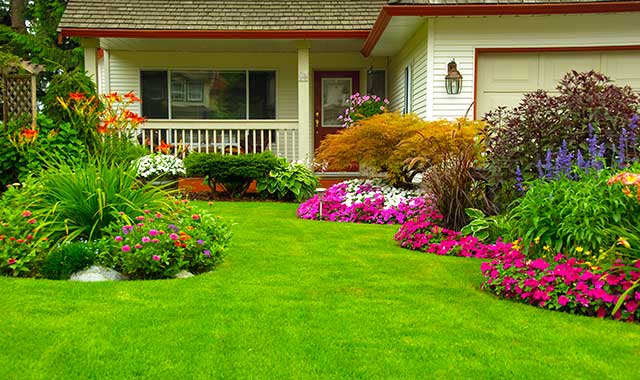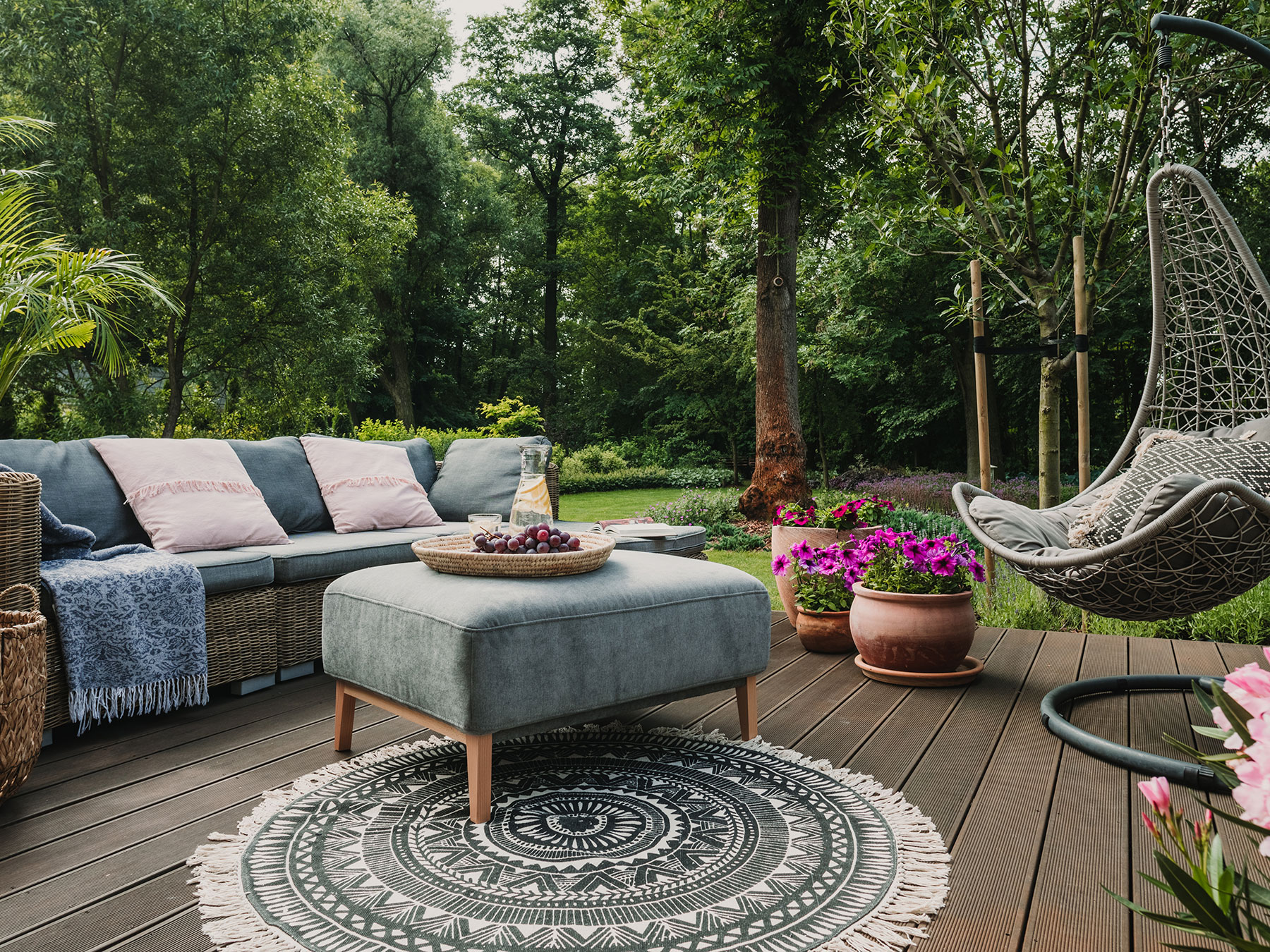You gardeners are just to turn over some dirt. But before your shovel hits dirt, take some time to stop, plan and think. Here’s what you need to consider.

Spring is here and lovers of living things are eager to dabble in dirt, whether that means planting trees, shrubs, vegetables, perennials or annuals. Before you dig in, though, consider the advice of local gardening professionals who see gardeners making common mistakes year after year. They want you to succeed.
1. Think Before You Plant
Gardening is both art and science. Science dictates that a tomato plant will never grow well in the shade and a large tree won’t thrive in a small space. Don’t waste time and money trying to bend the will of Mother Nature.
“Consider the light, soil and moisture conditions of a location before buying and planting,” says Sean Ducey, plant manager at Whispering Hills Garden & Landscape Center, 8401 S. Illinois Route 31, in Cary.
“If you can tell us which way your house is facing, where any large shade trees are located and whether there are any soggy areas in your yard, that’s great information that will help us to help you make a good selection,” says Ducey. “Otherwise, if you’re looking for a shrub and you see 500 kinds, you may be tempted to just pick one because it’s blooming or because it’s on sale. Resist emotional buys.”
2. Give ‘Em Room to Grow
It’s especially easy to underestimate the space trees and shrubs will require. They all look so small and cute when they’re young.
“It’s really important to carefully select the right plant or tree for the location you want to fill,” says Jon Carlson, owner of J. Carlson Growers, 8938 Newburg Road, in Rockford. “I just hate to see a tree butchered into submission because the owner didn’t think through the location before planting.”
Most plants come with tags that predict the plant size at maturity. Read and believe them, suggests Carlson.
3. Don’t Plant Too Early
If temperatures dip too low, plants will start to go downhill. And a stressed plant is more vulnerable to pests and disease, says Kim Hartmann, a master gardener and landscape designer at Countryside Flower Shop, Nursery and Garden Center, 5301 E. Terra Cotta Ave., in Crystal Lake. It’s better to wait a few weeks and get them off to a strong start.
“And there’s more than just air temperature to consider,” she says. “Soil needs to warm up and dry out from the spring thaw for plants to thrive. There are exceptions, but most annual plants and tender vegetables shouldn’t go into the ground before mid to late May.”
4. Know Thy Grower
It’s a cliche that holds especially true in gardening: you get what you pay for. In general, local growers want you to succeed at gardening so you’ll come back each year; big-box stores want to move volumes of product.
“At a reputable local greenhouse, plant stock tends to be healthier and better adapted to our local climate, and a lot of it is grown right here on site,” says Maryann Van Laten, who’s worked for Platt Hill Nursery in greenhouse sales for 23 years. “Our plants aren’t being trucked in from the East or West Coast.” Platt Hill has locations at 2400 Randall Road, in Carpentersville, and 9394 W. Lake St., in Bloomingdale.
Local growers also offer knowledge.
“Our staff members are professionally trained and regularly attend seminars to learn about plants,” says Van Laten. “We’re up on plant diseases or insect infestations that are going around in our region, for example. We’re a resource for home gardeners and we want to be helpful.”
5. Minimize Risk
Your garden is coming along nicely until, one sunny day, you notice a bug infestation.
“Don’t just go buy a bunch of pesticide and start spraying,” cautions Ducey. “You could be wasting your time and money, hurting your plants and contaminating water run-off. Pesticides are a bad idea, generally, but if you really have a serious problem with a pest, bring a sample to your garden center and we’ll help you to identify it and choose the right product to treat it. We’ll also explain how to apply it.”
Professionals often have an idea of what pests to expect in a given year, based on weather patterns. Some plants are simply more prone to problems than others and can be avoided. By minimizing risk, you’ll minimize problems. Many of today’s newer plants are bred to resist disease and insects.
6. Consider the Bigger Picture
Your garden may seem small, in the grand scheme of things, but it can have a big impact. Sticking a few milkweed plants in the ground will support monarch butterflies, which are entirely dependent upon that one plant to survive.
Planting for other pollinators like bees, bats, moths and hummingbirds can help to reverse their declining populations. It’s estimated that one of every four mouthfuls of food we eat is a direct result of pollination. Disappearing habitat, agro-chemical use, disease and the cultivation of ever-larger, one-crop fields are taking a big toll on pollinators.
Many greenhouses, gardening clubs and conservation organizations conduct free classes on subjects like sustainable gardening or gardening for wildlife. Check websites for schedules.
7. Contain Your Enthusiasm
People with busy lifestyles often find gardening success by containing their enthusiasm – literally.
Containers, hanging baskets and raised-bed gardens make it easier to control soil composition and weeds. Kept near the house, containers may be harder for critters to raid and easier to cover when frost threatens. But it’s vitally important to keep container plants well fed and watered. Nutrients tend to wash out of containers and above-ground soil dries out faster in wind and sun. In very hot weather, a hanging basket may need to be watered twice a day.
“But don’t overwater, either,” cautions Van Laten. “Just because soil feels dry on top doesn’t mean it’s dry all the way through the basket. If roots rot from sitting in too much water, they can’t absorb what they need any longer. That’s why good drainage is very important.”
8. Get the Dirt on Dirt
While potting soil may not seem important, it is.
“Box stores tend to front load baskets with fertilizer so they look fantastic in May but burn out before the season is over,” says Van Laten. “Locally owned greenhouses tend to use a better premium soil mix with slow-release fertilizers and moisture retention materials that give plants the best chance of looking great all the way into fall.”
While it’s tempting to save money by using dirt from your yard in containers, instead of buying potting soil, don’t do it. Most of our local dirt is too clayish and hard to nurture container plants well.
Most plants do fine with a general-purpose fertilizer, but some need specific types of food to thrive. Petunia varieties need more iron to keep foliage green and blooms strong, for example. Garden professionals can advise you.
9. Diversify Your (Plant) Stock
Investors know it’s risky to put all eggs into one basket, and so do growers, says Carlson, of J. Carlson Growers. Right now ash trees are falling faster than the stock market, due to an infestation of the emerald ash borer.
“In some cases, an ash tree that’s of high value can be saved but it requires a lot of work,” he explains.
Good replacement options include ginkos, maples, oaks, Kentucky coffee trees, Alaskan cedars, bald cypress, red pine, dawn redwood and various kinds of spruce, Carlson suggests. Work to have a variety of trees in your landscape.
“You want some trees that offer fall color, some that look like beautiful sculptures when their leaves have fallen, some evergreens and conifers for variety, some trees that flower in springtime and support wildlife,” says Carlson. “You want it all.”
10. Take Notes, Take Photos
During the splendor of summer, it’s hard to imagine you’ll forget what’s happening in your landscape, but you probably will. It’s a good idea to snap photos of your yard at regular intervals, including the tags that arrive with new plants. Download them to your computer, label the year and keep them with the notes you took in your garden last summer.
Likewise, if you find it difficult to plan a garden that always has something in bloom, visit garden centers at regular intervals, make notes and snap photos for your reference next spring.
“Jotting down when you planted something and how it did can really help from year to year,” suggests Hartmann. “Make note of when a plant bloomed or faced a challenge.”
Gardening can be as simple or complex as we choose to make it. “One reason people love to garden is because there’s always something new to learn, no matter how long you’ve been doing it,” says Ducey. “It can really hold your attention for a lifetime.”





















































